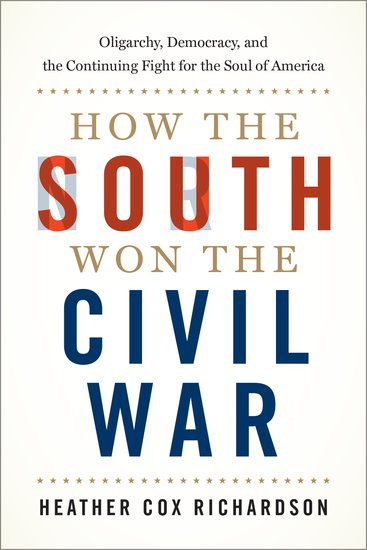Southern Democrats had largely escaped losses in the 1946 elections and thus gained considerable seniority, becoming chairmen of many important committees for the next several decades. They also installed one of their own, Lyndon Johnson of Texas, as Senate majority leader in 1955. His principal job was keeping civil rights legislation bottled up—without leaving anyone’s fingerprints behind.
As all of this was happening, the dynamics within the Republican Party were changing in ways that made it even more accommodating to Southern conservatives. The key was the rise of the West and its increasing political power as the population of Western states skyrocketed after World War II.
Unlike Eastern Republicans, whose history was defined by opposition to slavery, Western Republicans had long held racial views toward Asians and Native Americans similar to those of Southern Democrats toward African Americans. For example, Republican Governor Leland Stanford of California had this to say in his 1862 Inaugural Address:
To my mind it is clear, that the settlement among us of an inferior race is to be discouraged, by every legitimate means. Asia, with her numberless millions, sends to our shores the dregs of her population.… There can be no doubt but that the presence of numbers among us of a degraded and distinct people must exercise a deleterious influence upon the superior race, and, to a certain extent, repel desirable immigration. It will afford me great pleasure to concur with the Legislature in any constitutional action, having for its object the repression of the immigration of the Asiatic races.
Discrimination against Asians culminated in enactment of the Chinese Exclusion Act of 1882 under Republican President Chester A. Arthur, which formed the basis for all subsequent efforts to restrict immigration based on race and ethnicity. The 1888 Republican platform, in fact, said this was just the first step: “We declare our hostility to the introduction into this country of foreign contract labor and of Chinese labor, alien to our civilization and constitution; and we demand the rigid enforcement of the existing laws against it, and favor such immediate legislation as will exclude such labor from our shores.”
Thus by 1890, “the West had an ideology more in common with that of the South than that of the North,” Richardson writes.
Further bringing the Westerners and Southerners together was a shared attitude toward the federal government on economic issues. Southerners had long favored small government in Washington to keep it from interfering with segregation. This meant keeping taxes and spending low and unions out. Westerners shared this libertarian philosophy because they glorified the idea of “rugged individualism” that emanated from myths about the settlement of the frontier. As Richardson explains:
Mythology tells us that the theme of the American West was freedom, but the opposite was true. Like the antebellum South, society in the West was hierarchical according to race, class, and gender. When Americans moved there after the Civil War, they kept alive the same vision of the world that had inspired Confederates. Just as the South was a cultural and political force that came to dominate American society in the early nineteenth century, the West was a cultural and political force that came to dominate American society in the late twentieth century.
The moderate policies of Dwight Eisenhower, who adamantly refused to repeal the New Deal despite bringing a Republican Congress in with him in 1952, combined with an activist Supreme Court, which handed down the historic Brown decision in 1954, brought the Western Republicans and Southern Democrats more closely together. The federal government was their mutual enemy.
